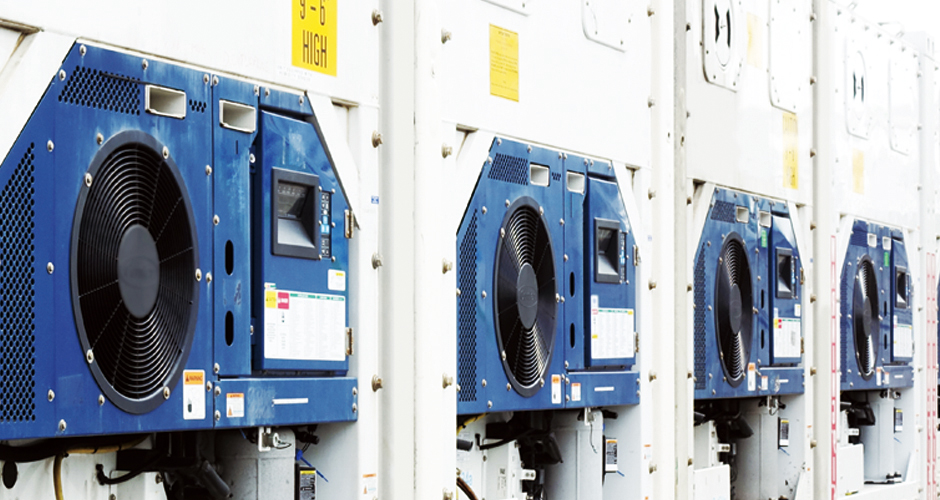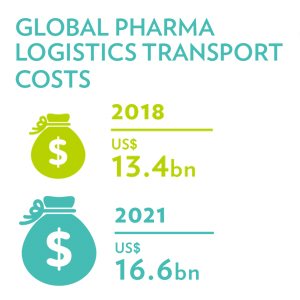 26th August 2019
26th August 2019
From succulent seafood to essential pharmaceuticals, cold chain is coming of age as growth in demand for temperature sensitive goods continues to climb.
The container reefer trade has benefited from this rise in demand, enjoying steady but sustained growth in recent years.
Expanding global trade in seaborne perishable reefer cargo and a shift from breakbulk to containers are the main drivers for growth according to Martin Dixon, Director – Head of Research Products for Drewry.
“Container shipping lines have been increasing the reefer slot proportion of their fleets, particularly the European operators with a particular focus on reefer trades, and we expect this trend to continue with rising demand,” he said.
However, Drewry forecasts that the growth in seaborne perishable reefer trade will moderate slightly over the next five years to around 3 per cent a year, down from past trend growth of 3.6 per cent annually. This reflects a general slowdown in global economic and trade growth and the continued trade standoff between the United States and China that affects the reefer dominant westbound transpacific trade in particular.
In 1977, Barbara Pratt, also known as the ‘Queen of Cool’ researched how and why perishable cargo spoils in refrigerated containers (reefers) and spent many years travelling aboard container ships, living inside a specially-designed refrigerated shipping container, studying how temperature shifts outside affect the temperature shifts inside the container, and thus the shelf life of perishable goods.
Her work had led to many advances in the shipping of refrigerated goods around the world, allowing, for example, fresh fruit and vegetables to be transported great distances without getting spoiled.
Airfreight has long dominated the cold chain sector, with high end perishable products providing the mainstay of the business, but ocean has now started to make inroads in some niche sectors.
The shift has come over the last several years most notably in the pharmaceutical sector. The industry has been moving, many products from air cargo to reefer ocean containers, with the greatest cause pointing to transportation costs.
Pharmaceuticals have historically been transported via airfreight due to the sensitive nature of the product, temperature regulation, and time sensitivity issues, according to Pharmaceutical Technology.
There has been increasing pressure: from governments to lower prices of pharmaceuticals, generic competition lowering profit margins, tighter regulations, and expiring pharmaceutical patents, as explained in Pharmaceutical Outsourcing. The hit to the bottom line translates into less ability to pay higher air cargo transportation costs.
Transporting pharmaceutical cargo via ocean freight is cheaper and provides better security, as the product is not touched once the container is sealed. However, there are still concerns with sea transportation including the quality of reefers in some regions and transit times can be quite slow, which introduces more supply chain problems. (To learn more, please refer to OPPORTUNITY Issue 5 – “Ocean takes big bite into high-value cargo.” )
Although there is an increase in new container vessels being built with additional ‘plug’ points for reefers, there is an issue regarding the availability of refrigerated containers particularly in hinterland locations where carriers have been reluctant to reposition empty reefer boxes, according to Martin Dixon.
Production of new refrigerated container equipment recovered in 2017 and 2018 and the fleet is forecast to continue growing ahead of cargo demand, but despite this tight supply conditions are expected to remain.
Vijan Chetty, Director of the Cool Chain Association, also sees poor infrastructure as a major challenge within some developing countries.
“Insufficient cold storage capacity, lack of equipment, poor port and road infrastructure are some of the challenges experienced within cool chain that results in inefficiencies and ineffective cool chain management. Global standards for cool chain processes does not exist. Therefore, harmonisation of standards within the cool chain sector do not exist. The Cool Chain Association is embarking on a project to standardise cool chain processes for the airfreight sector,” he added.
On the ocean side there have been positive developments through advancements in reefer container technology.
“Remote Control Monitoring (RCM) has been installed on a large percentage of containers by some of the shipping lines. This allows the exporter and shipping line to continuously track and trace the container and monitor the temperatures. This is a major advantage for stakeholders using containers that have RCM installed,” said Chetty.
IMO 2020 will have a significant impact on carrier fuel costs, Drewry estimates are that those relying on burning new compliant low sulphur fuel will face an 85 per cent hike in bunker costs, collectively rising to US$15 billion in 2020. These costs will be passed on to shippers and Drewry expects the new regulations to hasten the decline in the specialised reefer vessel fleet as the age of many of these vessels will make them uneconomic to operate.
Overall demand for specialised refrigerated vessels is decreasing annually anyway as shippers opt to move goods to market using refrigerated containers.
Food wastage and loss is also being discussed by governments, Non-Government Organisations and environmental forums and associations. In order to reduce the loss of perishable food, there are more countries looking for improved cold treatment management and stricter temperature management to reduce phytosanitary risks and spoiled food stuffs.
The main food products include fresh fruit and vegetables, poultry, fish and meat.
 Hutchison Ports South China handles 70 per cent of the fresh fruit imports into China through its terminals. Across its South China network terminals offer general reefer handling, controlled atmosphere reefer handling, sensitive reefers and on-dock inspection, pre-trip inspection, pre-cooling and remote reefer monitoring.
Hutchison Ports South China handles 70 per cent of the fresh fruit imports into China through its terminals. Across its South China network terminals offer general reefer handling, controlled atmosphere reefer handling, sensitive reefers and on-dock inspection, pre-trip inspection, pre-cooling and remote reefer monitoring.
In 2018, the top three Hutchison Ports business units handling the most reefer containers (in terms of unloading and discharging) were Hong Kong, Spain and Pakistan. While the Netherlands, Spain and the United Kingdom offers the most reefer storage in the Hutchison Ports network.
Recently, Hutchison Ports BEST terminal in the Port of Barcelona has increased its storage and connection capacity for refrigerated containers by 70 per cent from 1,600 to 2,750 connection points, making it one of the leading reefer terminals in the Mediterranean. The terminal offers a range of cold chain cargo services for the pharmaceutical and food product industries, according to Guillermo Belcastro, CEO of Hutchison Ports BEST.
Despite growing demand from shippers in Europe and China to increase reefer capacity on the Eurasian rail freight routes, there are still technical and cost issues slowing the deployment of temperature-controlled containers.
The main issue is the cost of installing new technology and engineering components to trains on the long-haul route.
Diesel-electric reefers, commonly used on the China-Europe routes, cost some US$68,000 per unit as opposed to electric powered reefers that cost approximately US$17,000. However, the rolling stock on the long-haul routes does not have the technology to power electric reefers commonly used by major ocean carriers.
As emission controls get tougher in Europe and China, there is a growing movement to phase out the diesel-powered generators used for reefers on the routes.
In Switzerland, specially equipped locomotives power reefers directly using a continuous train busbar that provides each reefer unit with an uninterrupted power supply, according to Juergen Trojak, a rail engineering expert.
For the long-haul from Asia to Europe, however, existing rolling stock is not equipped with power converters to connect the locomotive to each wagon. Instead, operators are using diesel to power reefers.
Trojak also said that deploying RCM systems and controlled atmosphere technology will be game-changers in accelerating reefer traffic on Europe-China routes.
Cargo quality and shelf life of products are essential for the shipment of perishable goods. In addition, carefully managed CO2 and oxygen levels are critical to delaying the ripening process of fruit and other perishables.
Without a sustainable, reliable and robust power supply, these technologies cannot be deployed on the route, where external temperatures range from plus 40 degrees Centigrade to minus 40 degrees Centigrade.
The average year-on-year increase in airfreight is 6 per cent and on ocean freight 10 per cent.
Loading
Unloading in port